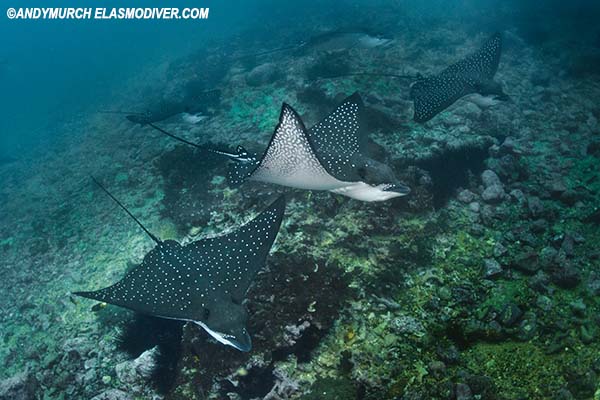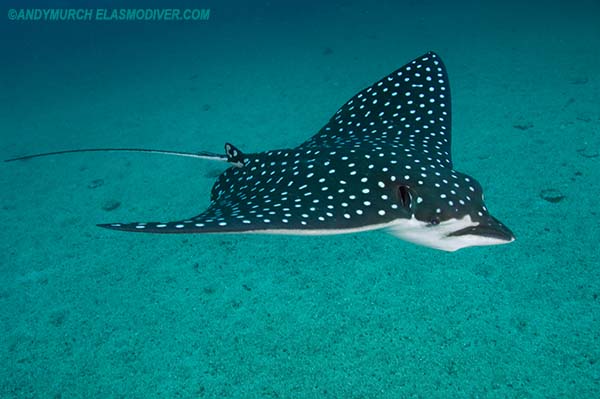|
|
|
SHARK INFO |
|
SHARK |
|
SHARK EVOLUTION |
|
|
|
SHARK DIVING |
|
SHARK DIVING 101 |
|
|
|
CONSERVATION |
|
|
|
PHOTOGRAPHY |
|
SHARK PHOTO TIPS |
|
|
|
RESOURCES |
|
|
|
WEB STUFF |
|
WHAT IS ELASMODIVER? Not just a huge collection of Shark Pictures: Elasmodiver.com contains images of sharks, skates, rays, and a few chimaera's from around the world. Elasmodiver began as a simple web based shark field guide to help divers find the best places to encounter the different species of sharks and rays that live in shallow water but it has slowly evolved into a much larger project containing information on all aspects of shark diving and shark photography. There are now more than 10,000 shark pictures and sections on shark evolution, biology, and conservation. There is a large library of reviewed shark books, a constantly updated shark taxonomy page, a monster list of shark links, and deeper in the site there are numerous articles and stories about shark encounters. Elasmodiver is now so difficult to check for updates, that new information and pictures are listed on an Elasmodiver Updates Page that can be accessed here:
|
|
_ |
PACIFIC SPOTTED EAGLE RAY |
|
View all available Pacific spotted eagle ray images in the Shark Pictures Database
Common Names: Pacific Spotted Eagle Ray, Pacific Eagle Ray, Pacific Whitespotted Eagle Ray.
Scientific Name: Aetobatus laticeps. Previously Aetobatus narinari
Synonyms: Aetobatus
guttatus (Shaw, 1804)
Family: Aetobatidae. Containing the single genus 'aetobatus'. Recently elevated to full family status. Previously considered part of the family myliobatidae.
Identification: A large eagle ray with a greyish-black or greenish-grey dorsum covered in white spots or small dark centered circles - ocelli. Ventral surface mostly white. Sometimes with dark mottling towards wing tips. Disc rhomboidal, wing-like and mildly falcate. Anterior disc margins almost straight. Posterior margins mildly concave near free tip and mildly convex near pelvic fin insertion. Prominent square head extends forward of pectoral fins level with the eye. Rostral lobe (snout) wide and moderately long. Caudal fins shorter and wider than in other spotted eagle rays, extending rearward beyond pectoral margin. Very long, whip like tail often broken off part way. 1 or more tail spines. Mouth located ventrally. Teeth plate-like. Nasal curtain (upper lip) large, fringed and deeply notched centrally.
Size: Wing span to at least 230cm.
Habitat: Reefs and seamounts, sand flats and bays.
Distribution: Eastern Pacific from the Sea of Cortez to Ecuador including Cocos Island, Malpelo Island and the Galapagos Islands.
Diet: Feeds by plowing its pointed rostral lobe through loose sand and silt and by sucking small fishes from the substrate. Diet consiste mainly of bivalves plus shrimps, polychaetes and fishes.
Reproduction: Ovoviviparous.
Conservation Status: the Pacific spotted eagle ray has not yet been assessed by the IUCN. However, when it was considered part of the Aetobatus narinari complex, it was listed as NEAR THREATENED. Fishing pressure in the Eastern Pacific is often high. Illegal shark fishing is rife in some areas; especially around offshore seamounts where policing is difficult.
Photographs: Top image - Malpelo Island, Columbia. Bottom image - Isla Iguana, Panama.
Similar species: Recent genetic, morphological and parasitic study has split the spotted eagle ray into three species that can be identified easily by range. The spotted eagle ray Aetobatus ocellatus is present in the Indo-West/Central Pacific region. The whitespotted eagle ray Aetobatus narinari is confined to the tropical Atlantic including the Gulf of Mexico and Caribbean Sea, and the Pacific eagle ray inhabits the tropical Eastern Pacific coast and Galapagos Islands. Further studies may eventually split the central and western populations of A.ocellatus into two distinct species.
Reaction to divers: Somewhat shy and hard to approach. Easier to get close to when they are preoccupied with feeding.
Diving logistics: Very common around offshore islands. Among other places, Pacific spotted eagle rays can be seen schooling at Isla Malpelo off the coast of Panama.
Citations:
|























